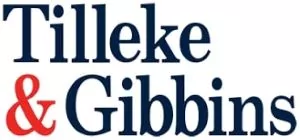On March 1, 2024, the Lao official gazette published the newly amended Law on Intellectual Property No. 50/NA, dated November 20, 2023 (the "2023 Law on IP"). The timing of this update is consistent with Laos' history of providing regular revisions to the country's IP legislation since the enactment of the first Law on Intellectual Property by the National Assembly in 2007 (the "2007 Law on IP"). These revisions include amendments in 2011, 2017, and now 2023.
Prior to 2007, intellectual property (IP) protection was granted through decrees issued by the prime minister's office for selected types of IP: trademarks, patents, petty patents, and industrial designs. The 2007 Law on IP marked a significant shift by introducing comprehensive legislation to protect industrial property rights, new plant varieties, copyright, and related rights. It laid the foundations for IP legislation in Laos, with the primary objectives of promoting and protecting intellectual creativity and attracting foreign investment.
Since 2007, the enactment of new IP laws has not always entailed significant amendments to the existing IP framework; however, it frequently serves as an opportunity to introduce long-considered mechanisms. For example, the amended Law on Intellectual Property No. 38/NA, dated November 15, 2017 ("2017 Law on IP") introduced, among other provisions, the possibility of opposition by a third party after the formal examination of a trademark application by the examiner.
The 2023 Law on IP brought additional changes and updates to the IP regulatory landscape in Laos. Some of the most notable of these are highlighted below.
Trademarks
While Laos already introduced a new mechanism for online trademark registration in November 2023—about a month before enacting the 2023 Law on IP—the new law did introduce some noteworthy changes.
Well-Known Marks
The 2023 Law on IP appears to ease the burden of proof for establishing that a mark is well known.
The 2017 Law on IP outlined several criteria for a trademark to be recognized as a well-known mark, thereby affording protection to these trademarks in Laos even in the absence of registration. One of the criteria was that the goods or services bearing the mark had to be widely circulated "within the territory." However, the law did not define the phrase "within the territory," leaving it open to interpretation. Consequently, this ambiguity may have restricted a trademark's eligibility as a well-known trademark, potentially limiting its protection within Laos.
Another criterion was that consumers within the country had to widely recognize and acknowledge the reputation of the trademark. Once again, the term "within the country" was open to interpretation.
The 2023 Law on IP no longer includes the terms "territory" or "country," eliminating doubts regarding potential interpretation that may have restricted the criteria to the Lao market only. Accordingly, evidence that a product is widely circulated, even worldwide, can now be used to demonstrate that a trademark is a well-known trademark. Additionally, the examiner may consider other criteria as well. However, the 2023 Law on IP does not state whether all criteria must be met or if only some are required. 1
Trade Name Registration Requirement
Under the 2017 Law on IP, it was not necessary to register a trade name, such as the name of a legal entity registered with the Ministry of Industry and Commerce (MOIC). However, the 2023 amendment suggests that trade names must now be registered to be granted protection against third party infringement.
Industrial Property Rights
Cancellation of Trademarks, Industrial Designs, or Geographical Indications
The 2023 Law on IP outlines two distinct procedures for canceling these IP assets. Similar to under the 2017 Law on IP, third parties may file a request for cancellation with the MOIC within five years of the publication of registration in the official intellectual property gazette. In addition, a new amendment now explicitly provides the possibility of canceling trademark, industrial design, or geographical indication registrations that are deemed either "not correct" or made in bad faith. The MOIC assumes this power without defining these terms. As to bad faith, in practice, both before and after the 2023 Law on IP, examiners evaluate the good faith of applications prior to registration, despite the lack of specific authorizing provisions in legislation. The 2023 Law on IP has now expressly granted authorities the power to assess bad faith post-registration. This seems to be the prerogative of the Department of Intellectual Property to prevent Laos from becoming a refuge for bad-faith applicants, such as trademark squatters.
Exhaustion of Rights
The 2023 Law on IP introduces the concept of exhaustion of rights, which may be the most notable addition to the IP legislative landscape in Laos. The operative language in the law suggests that the rights of trademark owners are exhausted as soon as a product bearing their trademark is sold, thereby preventing the trademark owner from restricting the use or resale of the product.
This aspect may provide further insight into the stance of local authorities on parallel imports. Historically, Laos has maintained a tolerant approach toward parallel imports, though its legality may be questionable. With exceptions for specific products necessitating a specific license from a licensor to a designated licensee with the right to sell the products domestically (e.g., drugs, medicine, cars), the legality of parallel imports remained uncertain.
However, the 2023 Law on IP has not amended provisions that could be cited to argue against the legality of parallel imports. The law still allows trademark or geographical indication owners to prevent third parties from using, selling, importing, or exporting goods bearing a trademark identical or similar to a registered trademark. This appears to present a potential conflict with the provisions on exhaustion of rights mentioned above, and it may require further clarification in the future.
Industrial Designs
Under the 2017 Law on IP, one of the requirements for protecting an industrial design was to provide evidence that the design was new and not formerly disclosed.
The 2023 Law on IP provides greater clarity on the methods of disclosure. While it remains essential for an industrial design to be novel, the revised law specifies that the industrial design must not have been disclosed to the public through "print media, electronic mediums, practical use, exhibitions, or any other means in Laos" prior to the priority date or the actual filing for registration. Accordingly, the law now explicitly recognizes the use of electronic media, such as websites and social media, as forms of disclosure.
Patents and Petty Patents
Means of Disclosure to the Public
The 2023 Law on IP provides similar updates regarding disclosure of patents and petty patents. It explicitly recognizes electronic media as a means of disclosure that may undermine the requirement of novelty. Previously, the law merely stated that the patent or petty patent should not have been known by the public, without providing further details. The 2023 Law on IP now stipulates that patents and petty patents must be inventions that have not been disseminated via publication in writing (e.g., newspapers), online media, actual use, or any other forms in Laos during the year before the application. The amendment provides good clarifications, as we can now say with certainty that an invention disseminated on the internet through a domain that is accessible in Laos is not eligible.
Required Information for Patent and Petty Patent Applications
As part of the application, the applicant previously had to include a thorough description of the invention or utility innovation that clearly explains its benefits and how to use it. The 2023 Law on IP now provides that for inventions derived directly or substantially from genetic resources or traditional know-how, the origin, name of the community, or ethnic group must also be disclosed.
Geographical Indications
The protection of a geographical indication now starts from the filing date of the application instead of from the date of registration.
Copyright
Protection Extended to Other Works of Art and Electronic Works
The 2017 Law on IP provided a list of works eligible for copyright protection. The list included:
- Drawings, paintings, carvings, lithography, tapestries, embroidery, and other works of fine art;
- Sculptures, engravings, and other works of sculpture;
- Designs of buildings or construction, internal or external decorations, designs, and other architectural works;
- Photographs produced using technical methods and works expressed by an analogous process;
- Illustrations, maps, plans, sketches and three-dimensional works related to geography, topography, architecture, or science;
- Dramatic-musical works, pantomimes or dramas, choreographic works, and other works created for performance purposes;
- Musical compositions, with or without lyrics, including edited notes or tunes;
- Phonograms;
- Works of applied art; and
- Films or other cinematographic works, or works expressed by an analogous process, including audiovisual works consisting of a sequence of images that can be continuously projected as a moving picture and can be recorded with other materials so as to be continuously projected as a moving picture, including their soundtracks.
To this list, the 2023 Law on IP adds "other works of art," expanding the scope of protection to encompass a broader range of artistic creations. In addition, the law specifies that creations can be tangible or electronic in nature.
Protection Term
Previously, the term of protection for applied art and pictures was 25 years from the date of creation. This term has now been extended to 30 years.
General Prohibition
As a general prohibition, the 2023 Law on IP now expressly prohibits counterfeiting, modifying, or using intellectual property rights of another person for commercial gain without authorization from the rightful IP owner. Accordingly, the use of counterfeit goods for personal use only, without any intent of engaging in a commercial activity, may now be accepted in Laos.
Conclusion
The 2023 Law on Intellectual Property introduces significant updates and enhancements to Laos' IP regulatory framework, marking a pivotal step in the country's ongoing commitment to robust intellectual property protection. Noteworthy changes include streamlined criteria for well-known trademarks, mandatory registration of trade names, and clarified disclosure requirements for industrial designs and patents. The law also introduces the concept of exhaustion of rights, potentially influencing parallel import practices. By expanding the scope of copyright protection to include electronic works and extending the protection term for applied art, the new law reflects Laos' dedication to fostering innovation and safeguarding intellectual creativity. These amendments aim to attract foreign investment and align Laos' IP laws with international standards, ensuring comprehensive protection for creators and innovators.
1 The criteria are as follows: (1) the relevant sector of the public recognizes the trademark through trade, use of the trademark on or in connection with goods or services, or in advertising; (2) the products, goods, or services bearing the trademark are widely circulated; (3) sufficient volume of goods sold or services provided; (4) regular and continuous use of the trademark; (5) goodwill associated with use of the trademark with the goods or services, based on factors such as good quality, service, or popularity; (6) consumers widely recognize the reputation of the trademark; and (7) high value of investment in the trademark, such as investing in the advertisement and distribution of the main trademark.
The content of this article is intended to provide a general guide to the subject matter. Specialist advice should be sought about your specific circumstances.




